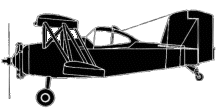
ASN Wikibase Occurrence # 290884
This information is added by users of ASN. Neither ASN nor the Flight Safety Foundation are responsible for the completeness or correctness of this information.
If you feel this information is incomplete or incorrect, you can submit corrected information.
| Date: | Friday 31 July 2015 |
| Time: | 11:30 LT |
| Type: |  Grumman G-164A |
| Owner/operator: | Precision Aerial Ag, LLC |
| Registration: | N963X |
| MSN: | 477 |
| Year of manufacture: | 1968 |
| Total airframe hrs: | 6730 hours |
| Engine model: | Pratt & Whitney R-1340 |
| Fatalities: | Fatalities: 0 / Occupants: 1 |
| Aircraft damage: | Substantial |
| Category: | Accident |
| Location: | Emmett, Kansas -
 United States of America United States of America
|
| Phase: | Manoeuvring (airshow, firefighting, ag.ops.) |
| Nature: | Agricultural |
| Departure airport: | Wamego, KS (69K) |
| Wamego, KS (69K) | |
| Investigating agency: | NTSB |
| Confidence Rating: |
The commercial pilot was conducting an agricultural application flight. The pilot reported that, while making a spray run, he heard a loud "bang" and saw a puff of smoke emanate from the upper right side of the engine, followed by the propeller seizing. He made a forced landing in a field, and the airplane collided with some bushes and then nosed over.
Examination of the engine revealed several loose cylinder stud nuts and hold-down bolts that appeared to have been pushed up on the cylinder skirt. Several of the studs, particularly the No. 4 cylinder stud, were stretched and looked to be nearly pushed out of the engine crankcase. One cylinder was almost separated from the crankcase.
Examination of the airplane's maintenance logbooks revealed that the engine had received a major overhaul more than 8 years before the accident. The records indicated that, since that time, inspections of the cylinder heads and the cylinder hold-down studs had been conducted in compliance with two Federal Aviation Administration airworthiness directives. The engine was last inspected about 3 months before the accident. During this inspection, maintenance personnel checked the cylinder bases and heads for cracks and loose studs; however, they did not detect that the cylinder nuts and hold-down bolts were not properly secured.
Probable Cause: The engine failure due to several loose, damaged cylinder stud nuts and hold-down bolts. Contributing to the accident was maintenance personnel's failure to detect that the cylinder nuts and hold-down bolts were not properly secured during the engine's most recent inspection.
Accident investigation:
 |
|
Sources:
NTSB CEN15LA330
Location
Revision history:
| Date/time | Contributor | Updates |
|---|---|---|
| 07-Oct-2022 06:49 | ASN Update Bot | Added |
Corrections or additions? ... Edit this accident description
The Aviation Safety Network is an exclusive service provided by:


 ©2024 Flight Safety Foundation
©2024 Flight Safety Foundation